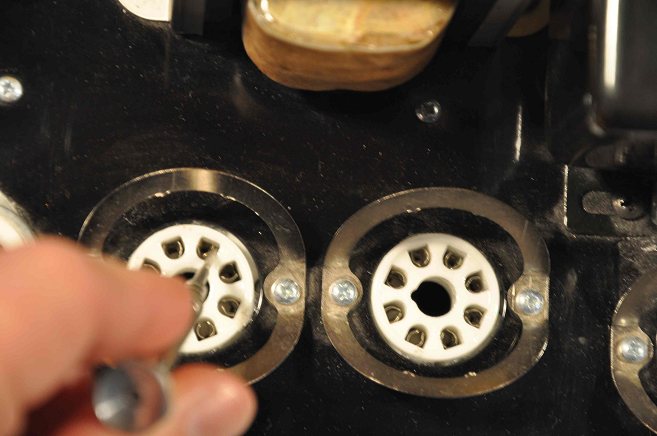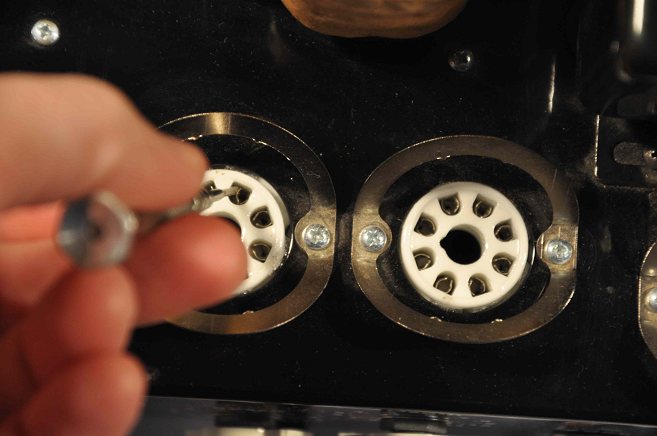

A common problem with tube amps with multiple tube changes is the metal clamps within the sockets begin to lose their tension and grip on the tube pins having become widened from the frequent pressures of tube extraction/insertion. This causes insufficient connection which can bring loss of power with random volume drops, sometimes bringing a thin sounding amp. Of course, these are symptoms of dying tubes as well, but if you've just replaced tubes with known quality, and you're getting these symptoms, it's a good idea to check for proper socket tension. Sometimes you can move the power tubes around and the amp will come back to life; this will also indicate that the pins are loose (If the rectifier tube has the problem, the amp will be light up but with no sound).
Rule #1, before working on the amp, make sure power is OFF. If it has a standby switch leave it in the on position and just cut off the power. Unplug the amp from the wall. Tube amps contain lethal voltages. Indeed, it is possible that even after the amp is unplugged high voltage can remain. If you are not familiar on how to discharge capacitors you should find a technician who can help you.
The only tool needed is a flathead jewelers screwdriver as seen in Photo 1 below. To retention, gently and carefully push the circular clamps towards the center of the tube socket so that when a tube is installed the socket clamps make good contact with the tube pins. Make sure the clamp is still centered within the hole. Sometimes a forced tube entering at the wrong angle with mangle the clamp, so check for this as well. The only thing to be careful about here is that you do not close the socket clamp so much that the tube will not fit into the socket with undo force. See photos below on positioning of screwdriver.
After retentioning the power tube socket clamps, insert each power tube with a small amount of rotation so as not to stretch out the socket clamps again. After the power has been turned on to the amp you can gently wiggle the power tubes and listen for any noises that may indicate that the socket is still not gripping the pins properly.
TOOLS NEEDED:
• Simple flathead Jewelers Screwdriver as seen below
See photos below, #2 and #3 clicking to full resolution view.
1) Jewelers
Flathead Screwdriver
fig 1

fig 2
~ click for full view

fig 3
~ click for full view

MS & kh